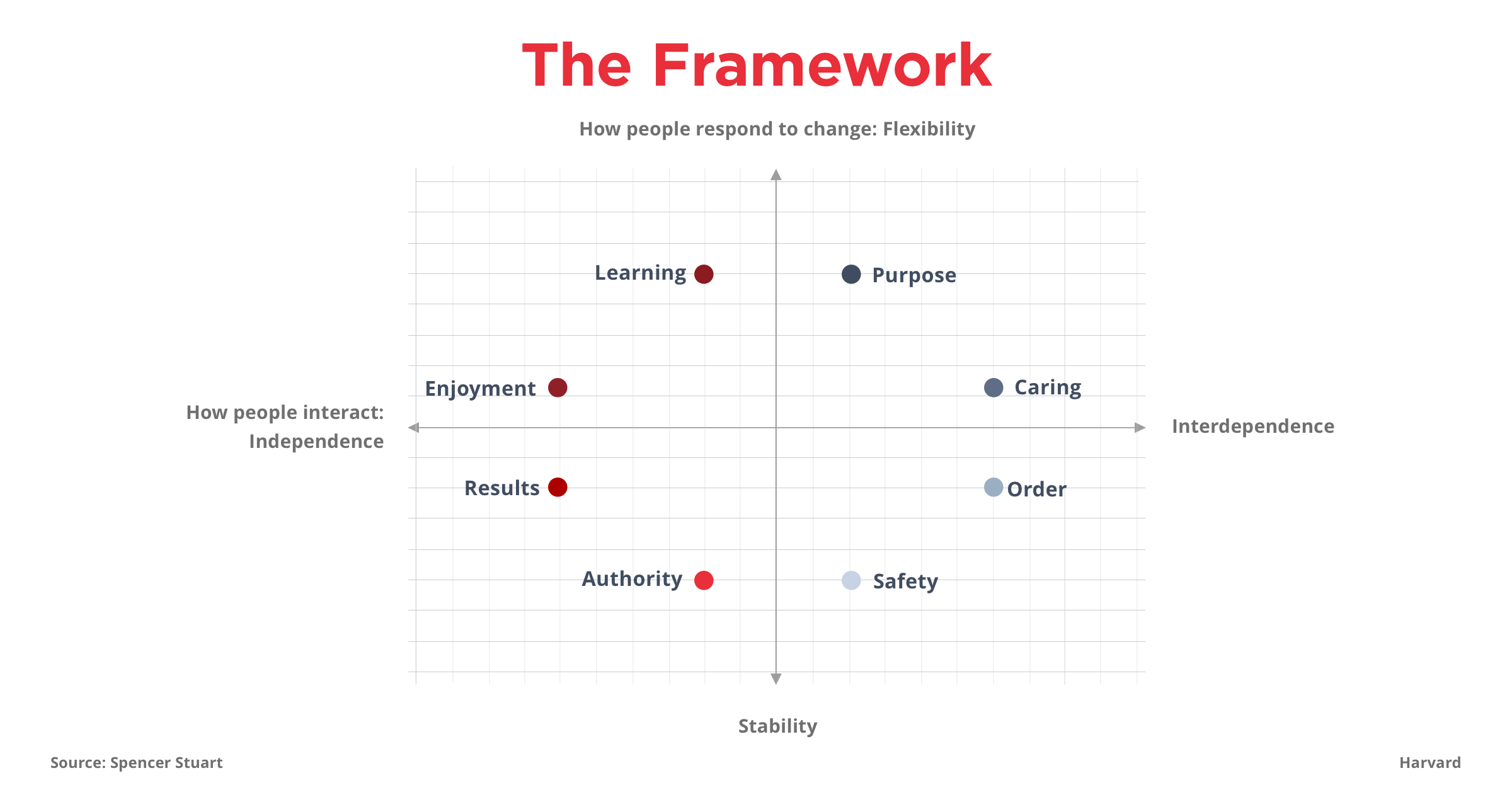
8 Different Types of Company Culture that Exist Today
Have you ever wondered why everyone shows up 5 minutes late to meetings in your office, while your friend insists meetings start right on the dot at her company? Or perhaps why some people seem to get all their friends from work, while others never see their coworkers outside the office? It could be one of the 8 types of company culture.
Company culture holds many of the answers to these and countless other differences between organizations. In order to better understand the types of culture and the optimal approach to dealing with each, four organizational development experts conducted a literature review to create eight distinct culture buckets (Harvard Business Review).
To save you the reading, we’ll discuss the two dimensions that led to the classification of the eight types of culture, as well as elaborate on each bucket.
Related: Best Reverse Interview Questions & How to Offer Reverse Interviews
The 8 Types of Organizational Cultures- Purpose
- Caring
- Order
- Safety
- Authority
- Results
- Enjoyment
- Learning
In their literature review, the authors of this research found two concepts that underlie a company’s culture, allowing them to plot the different cultural types on a two-dimensional axis.
First Dimension: The Way People Interact
The first dimension is “people interactions”, which can range from highly independent to highly interdependent—so as you might imagine, independent cultures foster competition and value individuals who can thrive on their own, whereas interdependent cultures judge success through group effectiveness.
Second Dimension: How a Company Responds to Change
The second dimension deals with the response to change, ranging from stability to flexibility—the former favoring rules and hierarchy, and the latter innovation and diversity.
Using these two dimensions, the authors created the below two-dimensional axis and resulting in eight cultural types which drive what unites employees, the type of person that typically does well in that type of organization, and what company leaders tend to focus on.
Interestingly, the cultural type a company falls into often reflects the industry and geographic location; For example, the authors categorize China-based Huawei as having a culture of “authority”, which could perhaps be reflective of the broader culture in China.
To be certain, companies don’t necessarily have to fit into just one type of culture, but categorizing them as such can help company leaders and employees alike to be more effective in their work.

Employees united by: Driving sustainability and global communities
Employees are generally: Compassionate and open-minded
Leaders emphasize: Shared ideals, greater cause
Good for: People looking for an organization that values making an impact on the world over individual achievement
Example: Whole Foods
2. Caring Organizational CultureEmployees united by: Loyalty
Employees are generally: Collaborative, welcoming
Leaders emphasize: Sincerity, teamwork, good relationships
Good for: Those motivated to perform well as a result of positive working relationships
Example: Disney
3. Order Organizational or Corporate CultureEmployees united by: Cooperation
Employees are generally: Methodical, rule-following
Leaders emphasize: Shared procedures, customs
Good for: People who are most comfortable in unambiguous, structured environments
Example: SEC
4. Safety Organizational CultureEmployees united by: The need to feel protected and the ability to anticipate organizational changes
Employees are generally: Risk-conscious, conscientious
Leaders emphasize: Advance planning, pragmatic
Good for: Employees who like to feel included in organizational changes and who prefer careful planning
Example: Lloyd’s of London
5. Authority Company or Organizational Culture
Employees united by: Strong control
Employees are generally: Competitive, looking to get ahead
Leaders emphasize: Confidence, dominance
Good for: People who are motivated by gaining personal advantage more than organizational success
Example: Huawei
6. Results Organizational CultureEmployees united by: Success
Employees are generally: Outcome-oriented, merit-based
Leaders emphasize: Goal accomplishment
Good for: Employees who perform their best when executing against set goals and driving towards a winning result
Example: GSK
7. Enjoyment Organizational or Company CultureEmployees united by: Playfulness and stimulation
Employees are generally: Lighthearted, in search of work that makes them happy
Leaders emphasize: Spontaneity, a sense of humor
Good for: Fun-loving people who look for a sense of excitement in their day-to-day
Example: Zappos
8. Learning Organizational CultureEmployees united by: Curiosity
Employees are generally: Inventive, creative, always looking to explore alternatives
Leaders emphasize: Innovation, knowledge, adventure
Good for: Those who value learning over other things that might be attained through work, such as stability or personal achievement
Example: Tesla
Conclusion: Which Company Culture Aligns with Your Values the Best?At the end of the day, no one type of company culture is right or wrong–nor do most companies fall perfectly into a single culture. Rather than trying to box a company into a single cultural type, use these eight classifications as tools to better understand how different companies function–and, perhaps more importantly, where you’ll be the happiest and most productive.
Are you looking for a new role in tech or sales? Try the AI-driven career marketplace matching talent with ambitious teams.Originally written in October 2018. Revised in December 2022.
Related blog posts

Build Confidence and Take Control of Your Tech Job Search Series
The process of finding a job often feels overwhelming. It’s difficult to determine the best avenue...

Tech Candidate Spotlight: Adam Gerard, Senior Software Engineer
Can you share a little bit about your educational background? My educational...

Ready to Find Your Dream Job? Start with Knowing What You Want
Searching for a new job, let alone a ‘dream job,’ may feel daunting, especially if you...

Part of a Layoff? Steps Jobseekers in Tech & Sales Need to Take First
Chapter 1 of a series to help jobseekers bounce back better than ever (or to feel better prepared...

What is Workplace Ageism? (+ 5 Ways to Combat Ageism in the Job Search)
In recent years, organizations across all industries have made strides when it comes to building...

What is DEI? How Does it Improve the Sales & Tech Job Search Process?
A survey of tech and sales talent revealed there’s some confusion around the acronym DEI,...

